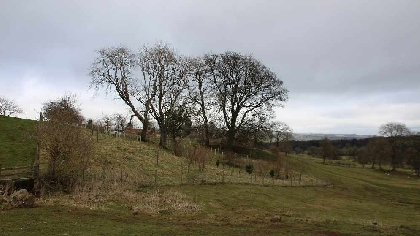
Woods and hedgerows across a six mile stretch of mid-Wensleydale have been connected to create an ideal home for the endangered Dormouse.
Land managers have spent the past three years planting, or bringing into ‘appropriate management’, hedgerows and woodlands either side of Freeholders’ Wood at Aysgarth Falls, where dormice were reintroduced in 2008. Woods and hedgerows across a 9.5 kilometre (six mile) stretch of mid-Wensleydale have been connected to create an ideal home for the endangered Hazel Dormouse.
Farmers have even planted brambles – plants they might usually regard as a thorny nuisance – in order to provide the mammals with late season fruit.
Although now formally completed, the impact of the three-year ‘Wensleydale Dormouse Project’ will be monitored. Simple tubes, containing inked pads, have been hung in hedges to track how far the dormice spread out from their Aysgarth stronghold.

“Local people have really taken to hazel dormice,” said project officer Phill Hibbs. “School children at Bainbridge studied them during lockdown, so they’ll know that the dormice are about to wake up from their winter torpor, while local landowners – particularly Stuart Raw at Hollins Farm and Tom Orde-Powlett of the Bolton Estate – have enthusiastically supported the work.”
Over three years more than 12 kilometres of existing hedgerow was surveyed, with a quarter of brought into more appropriate management. Almost two kilometres of new hedgerow was planted. Ten woodland areas, covering more than four hectares, were also brought into appropriate management.
Looking at one such woodland on Hollins Farm, Mr Hibbs explained: “This woodland had shrunk to a few mature ash, sycamores and hawthorns. About 15 years ago it was underplanted, but the rabbits got in and knocked it all back. To put it into good management, we’ve secured all the boundaries and added tree stock, going heavy on the hazel, the primary tree the dormice would use, as well as rowan, hawthorn, blackthorn and holly – and dog rose, bramble and honeysuckle to get a longer fruiting period. These small woodlands are stepping stones for the dormice as they go down the dale.”

Funding for the project was provided by People’s Trust for Endangered Species (PTES), Yorkshire Dales Millennium Trust (YDMT) and the Woodland Trust, as well as the National Park Authority.
Records show that dormice were found in Wensleydale in 1885 but became locally extinct.
Ian White, Dormouse & Training Officer for PTES said: “It’s been great to see how an appealing small mammal such as the dormouse has galvanised landscape-scale nature conservation. Hazel dormice are endangered, nocturnal and also very shy, so it’s comforting to know that all this effort has been made to help a mammal that few people will ever see.”
The State of Britain’s Dormice 2019 report, published by PTES, revealed that hazel dormice have declined by 51% since 2000. Loss of quality woodland habitat and climate change are key factors in their decline, but the report found that correct woodland management, as demonstrated at Wensleydale, is the key to bringing this endangered species back from the brink.
Carol Douglas, Woodland Officer at YDMT, said: “The landowners’ knowledge in Wensleydale has been key to putting the trees and hedges in the right places. What we’ve got to hope for now is that the fences and guards do their job and keep the rabbits out. So far the signs are good. Some of the new hedges have taken well and are going to provide habitat of the highest quality for dormice, as well as for other animals and birds.”
To see more details, an end of project report has been published.
The Wensleydale Dormouse Project was part of the Wensleydale Project. Increasing and maintaining the populations of priority species such as dormice is one of the objectives set out in the Yorkshire Dales National Park Management Plan 2019-2024.
HAZEL DORMOUSE FACTFILE (courtesy of People’s Trust for Endangered Species)
- Habitat: deciduous woodland with plenty of scrub and undergrowth resulting from coppicing.
- Description: chubby build; bright golden-brown colour with creamy-white underparts. Large, prominent, shiny, black eyes and small, rounded ears. Fluffy tail.
- Size: head and body about 70mm (2in); tail of similar length. Adult weighs about 17g (weight of two £1 coins) and up to 40g at the start of hibernation.
- Life-span: up to 5 years in the wild; 6 years in captivity.
- Food: flowers, pollen, fruit, nuts and insects. Hazel, honeysuckle, bramble and oak are particularly important as food sources.
- The word dormouse comes from the French word 'dormir' - to sleep. The dormouse is a member of the rodent family which means it has prominent, strong and sharp front teeth (the incisors) for gnawing food.



 We could be charging visitors to stay in The Dales
We could be charging visitors to stay in The Dales
 A684 in Wensleydale set to close for 11 weeks for repairs
A684 in Wensleydale set to close for 11 weeks for repairs
 Coast to Coast upgrade completed
Coast to Coast upgrade completed





Comments
Add a comment